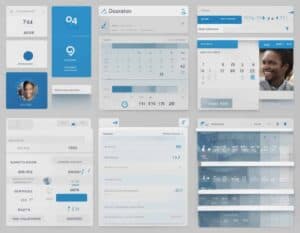Trust is the cornerstone of long-term success – this is specifically true in the bustling landscape of nonprofit organizations.
As fundraising leaders, managers, and teams, our mission extends beyond merely securing contributions; it’s about fostering enduring relationships built on a foundation of trust.
In this guide, we’ll delve into essential strategies for building trust among donors, ensuring sustained support and meaningful impact for our initiatives.
The Significance of Donor Trust
Donor trust serves as the bedrock of successful fundraising efforts, providing sustenance and driving meaningful change within our organizations.
- Sustainability: Donor trust ensures the long-term viability of our fundraising initiatives.
- Steady Funding: Trustworthy relationships with donors yield a consistent stream of funding, enabling effective planning and execution of long-term projects.
- Impactful Change: With trust, donors become committed partners in our mission, supporting us through challenges and triumphs alike.
- Resource Reliability: Trusted donors provide reliable resources, minimizing uncertainty and allowing for strategic resource allocation.
- Organizational Reputation: A reputation built on trust attracts new donors and strengthens existing relationships, amplifying the reach and impact of our fundraising efforts.
- Efficient Operations: Trust enables smoother operations, reducing friction in donor interactions and enhancing efficiency in fundraising endeavors.
- Innovation Encouragement: Trust fosters an environment where innovative fundraising approaches can flourish, driving creative solutions to complex challenges.
- Community Engagement: Trust among donors fosters a sense of community and mutual purpose, enhancing collaboration and collective impact in fundraising initiatives.
In the realm of fundraising, the significance of donor trust cannot be overstated. It underpins sustainability, fosters impactful change, and amplifies the reach of our efforts, making it an indispensable asset in our mission-driven endeavors.
A. Transparent Communication: Foundation of Trust
Transparent communication entails openly sharing information with donors, fostering trust and accountability within our organization.
Significance of Transparent Communication
- Building Trust
- Enhancing Donor Confidence
- Strengthening Relationships
- Fostering Transparency Culture
- Encouraging Engagement
- Mitigating Misunderstandings
- Demonstrating Integrity
- Inspiring Confidence in Impact
Utilize email marketing platforms, CRM systems, and donor management software to streamline communication processes and ensure timely and transparent interactions with donors.
To effectively implement transparent communication strategies, consider the following actionable tips.
1. Establish Communication Protocols
Set clear guidelines for communication, including frequency, channels, and content, to ensure consistency and transparency in all interactions with donors.
2. Provide Regular Updates
Schedule regular updates on organizational activities, achievements, and challenges to keep donors informed and engaged in our mission.
3. Be Honest About Challenges
Acknowledge and address challenges openly and honestly, communicating our strategies for overcoming them and demonstrating our commitment to transparency.
4. Invite Feedback and Questions
Encourage donors to provide feedback, ask questions, and voice concerns, demonstrating openness to dialogue and collaboration.
5. Share Impact Stories
Highlight the tangible impact of donor contributions through success stories, testimonials, and outcome reports, demonstrating transparency in our use of funds and the effectiveness of our initiatives.
Transparent communication is not just a practice; it’s a core value that underpins trust, confidence, and meaningful engagement with our donors.
B. Personalized Engagement: Making Donors Feel Valued
This means customizing interactions with donors to recognize their individuality and make them feel appreciated and valued.
Significance of Personalized Engagement
- Enhancing Donor Satisfaction
- Fostering Emotional Connection
- Building Long-Term Relationships
- Increasing Donor Retention
- Differentiating from Competition
- Inspiring Higher Giving
- Encouraging Referrals
- Driving Impactful Change
Utilize customer relationship management (CRM) systems and donor management software to track donor preferences and interactions, allowing for personalized communication and outreach strategies.
To effectively implement personalized engagement strategies, consider the following actionable tips.
1. Collect Donor Data
Gather information about donors’ interests, preferences, and past interactions to tailor future communications and engagement efforts effectively.
2. Segment Donor Lists
Segment donors based on demographics, giving history, and engagement levels to personalize communication and outreach strategies for different donor segments.
3. Send Personalized Communications
Use donor data to personalize email communications, letters, and other outreach efforts, addressing donors by name and referencing their past contributions or interests.
4. Offer Exclusive Opportunities
Provide donors with exclusive opportunities, such as behind-the-scenes tours or invitations to special events, based on their interests and engagement level.
5. Express Gratitude Sincerely
Show genuine appreciation for donor support through personalized thank-you notes, acknowledging specific contributions and expressing gratitude for their impact.
Personalized engagement is not just about making donors feel valued; it’s about building authentic connections that inspire loyalty, trust, and continued support for our organization’s mission.
C. Impactful Storytelling: Demonstrating Tangible Results
This involves using narratives to vividly illustrate the real-world outcomes and transformative effects of donor support.
Significance of Impactful Storytelling
- Connecting on an Emotional Level
- Inspiring Action
- Humanizing our Mission
- Building Trust and Credibility
- Educating and Informing
- Differentiating from Competitors
- Engaging a Wider Audience
- Sustaining Donor Relationships
Utilize multimedia platforms such as social media, video storytelling, and interactive websites to convey impactful narratives and engage donors visually and emotionally.
To effectively leverage impactful storytelling, consider implementing the following actionable tips.
1. Identify Compelling Stories
Seek out and identify compelling stories from beneficiaries, volunteers, and staff that illustrate the impact of donor support on individuals and communities.
2. Focus on the Human Experience
Center narratives around the human experience, highlighting personal journeys, challenges overcome, and lives transformed by donor generosity.
.3. Use Visual and Multimedia Elements
Incorporate visuals, videos, and multimedia elements into storytelling efforts to enhance engagement and evoke emotions in donors.
4. Provide Context and Background
Offer context and background information to help donors understand the significance and relevance of the stories being exchanged.
5. Highlight Concrete Outcomes
Clearly articulate the tangible outcomes and results achieved through donor support, providing concrete examples of how contributions make a difference.
Impactful storytelling is not just about sharing stories; it’s about inspiring empathy, driving action, and building enduring connections that propel our mission forward.
Building Trust Through Consistent Action
Trust is a delicate yet essential aspect of fundraising, requiring continuous effort and steadfast dedication.
As leaders and teams in the fundraising realm, we must embody integrity, accountability, and an unwavering commitment to our mission. Through consistent implementation of trust-building strategies, we not only cultivate lasting relationships but also establish a solid foundation of trust that underpins our organization’s credibility and reputation.
Consistency in action speaks volumes about our values and principles, demonstrating to donors our genuine dedication to transparency and ethical conduct. By aligning our words with consistent deeds, we reinforce trust in our organization’s integrity, fostering a sense of confidence and reliability among our donor community.
In the journey of trust-building, it’s the consistent actions, day in and day out, that truly solidify our relationships and pave the way for sustained support and impact.
Final Thoughts | Forge Trust, Drive Impact
In nonprofit fundraising, trust remains the cornerstone of success. As stewards of our organization’s mission, it’s imperative to prioritize trust-building initiatives, fostering enduring connections with our valued donors.
Through transparent communication, personalized engagement, impactful storytelling, and consistent action, we lay the groundwork for sustainable growth and meaningful change.
Let’s embark on this journey together, cultivating trust that transcends mere transactions and fuels lasting impact. Invest in fundraising management software today to streamline your efforts and maximize your impact.






